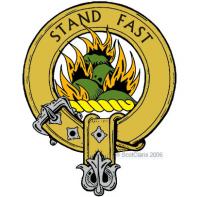
Clan Grant
After the Normans had established themselves in England, the name Grant became widespread, appearing in many documents from various areas, which are with us today. In the French and Gaelic languages, the word has the similar meanings of big and more.
The earliest recordings of Grants in Scotland, however, are from the mid-thirteenth century, and describe the acquisition of Stratherrick land through the marriage of a Grant to Sir John Bisset’s daughter Mary. One of their two children was Sir Laurence le Grand, who became the Sheriff of Inverness.
The family supported Robert the Bruce towards his acquisition of the Scottish crown.
At the Battle of Dunbar in 1296, both Randolph and John de Grant were overcome and imprisoned for a time.
The family continued to acquire lands in Glen Urquhart and Glenmoriston, and with Bruce’s victory came rewards and endorsement of Strathspey property such that the Grants were soon to develop into a key power in the Highlands.
Marriage brought yet more power for the Grants when Sir John Grant married Maud, the daughter of Gilbert of Glencairnie. Maud was heiress of the cadet branch of the ancient Celtic Stathearn dynasty, an Earldom older than written records. Their eldest son was the first of the Grants of Freuchie, while a younger son was the progenitor of the Tullochgorm branch.
The Grants consistently supported Royalty. James V rewarded their support by granting James Grant of Freuchie, known as James the Bold, with a charter placing him outwith the authority of all royal courts except the Supreme Court of Edinburgh.
Ludovick Grant, 8th Earl of Freuchie, supported William of Orange, and in 1694 his barony of Freuchie was raised to a regality, effectively giving him the power of a king in his own Highland kingdom.
In the years of the Jacobite risings, again all but a few of the Grants were on the side of the Royalists.
The family reaches out into many branches today. The Grants of Rothiemurchus are one of the principal branches and are landowners around Aviemore.








